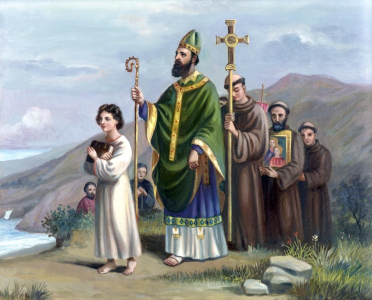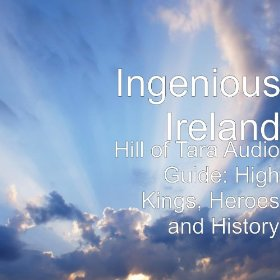Ancient Ireland's Hill Of Tara
If you have read any of my travel stories about County Meath, you know that I have mentioned the famous Hill of Tara, the ancient Irish site built circa 3200 B.C. Carbon dating shows that Tara is 600 years older than the pyramids of Giza and 1000 years more ancient than Stonehenge. The Hill of Tara, known as Temair in Gaelic, was the ancient seat of power in Ireland. Located in County Meath, also known as 'the royal county', it is said that 142 kings have reigned there in prehistoric and historic times. In the ancient Irish pagan religion and mythology, Temair was the sacred place of dwelling for the gods and was the entrance to the afterlife. Saint Patrick is said to have come to Tara to confront the ancient pagan religion at its most powerful site.
In one interpretation, the name Tara means a 'place of great prospect' and, on a clear day, it is claimed that you can see half the counties of Ireland from the top of Tara. In the distance you can view the white quartz entrance to Newgrange, the ancient pagan passage-tomb and gateway to the other world. Further to the north is the Hill of Slane, where St. Patrick was to have lit his Pascal fire prior to his visit to Tara in 433 AD.
Early 20th century Israelites came to Tara to unearth the Arc of the Covenant which they were convinced was buried on this famous site. Digging in the Mound of the Synods, their unsuccessful efforts found only some Roman coins. An official archeological dig in the 1950's revealed circles of post holes which indicated construction of substantial buildings there. A new theory has arisen that Tara was the ancient capital of the lost kingdom of Atlantis and that Atlantis was Ireland.
Many monuments and earthen structures are located on the Hill of Tara. The earliest settlement at the site was built during the Neolithic period and the Mound of the Hostages was constructed circa 2500 B.C. Thirty of the monuments are visible and likely just as many have no visible remains on the surface but can be seen by air. Recently discovered on Tara is a large temple measuring 170 meters and made of over 300 wooden posts. Two monuments at Tara have been officially excavated - The Mound of the Hostages in the 1950's and the Rath of the Synods at the turn of the 20th Century.
Sitting atop the King's Seat (Forradh) of Temair is Tara's most famous monument. Ireland's ancient coronation stone, the Lia Fail, or 'Stone of Destiny', is said to have been brought here by mythological godlike people known as the Tuatha Dé Danann. This was one of their sacred objects and It was said to roar when touched by the rightful King of Tara.
Once located just north of the Mound of the Hostages, it was moved to its present site after the Battle of Tara during the Irish revolution. In 1798, it was moved to mark the graves of 400 rebels who died at that battle. Many historians accept that the present granite pillar at Tara is the true Stone of Destiny. A number of people have argued that the Stone of Scone is in fact the real Stone of Destiny; however, the Stone of Scone is located in Westminister Abbey where the monarchs of England are crowned.
In the churchyard at Tara there are two standing stones, which are believed to be ancient remnants of a time when there were many stone monuments on Tara. The taller of the two stones is thought to feature a figure of the Celtic fertility god Cernunnos and is similar to many of the 'Sheela na Gig' representations found across Ireland. These stones may date to the Neolithic period but are more likely from the Bronze Age.
Notably, early histories say that on this section of the Hill of Tara there once stood a monument called 'The Cross of Adamnan', commemorating a seventh century saint who enacted laws to give greater rights to women. Ancient documents about Tara name many standing stones on this section of the hill, known as Dall, Dorcha, Maol, Bloc and Bluicna. In an ancient mythological legend, the standing stones were believed to have chosen the rightful High King of Tara. As the legend goes, those vying for the High Kingship of Tara had to drive their chariots toward two sacred stones standing closely together; these stones remained closed for the unacceptable candidate and opened a path only for the rightful king.
Disclaimer: LittleShamrocks.com is an affiliate website that receives commissions from sales of the products listed. We have purchased and sampled many, but not all, of the products on these pages.
© Copyright LittleShamrocks.com. All Rights Reserved.






